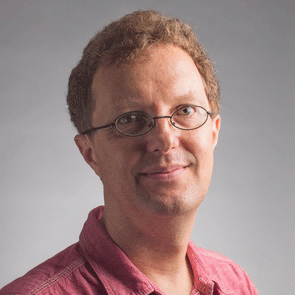George Musser
Knight Science Journalism Fellow, ’14-15

George Musser is a contributing editor at Scientific American magazine in New York. He was the magazine’s senior editor for space science from 1998 to 2012, when he left the full-time staff to focus on book-writing. He received the 2011 Science Writing Award from the American Institute of Physics in 2011 and Jonathan Eberhart Planetary Sciences Journalism Award from the American Astronomical Society in 2010. His first book, The Complete Idiot’s Guide to String Theory, was published by Alpha in 2008.
What is the one story you would like to be covering if you weren’t a KSJ Fellow this year?
Oh boy, I don’t know — there are so many! Also, there are things I don’t even know are happening, but would know if I were actively trawling for stories. I’m not saying this to be facetious, but to make a point: the great thing about science journalism is that so much is going on all the time. The labs are bursting. Sometimes all you need to do is take a walk, look for something you’ve always taken for granted, and ask: Wait, why is that? Like a person lost in the woods who follows the river downstream back to civilization, a science journalist can just follow the stream of “why” questions to the cutting edge.
What advice do you have for a young MIT student who is interested in a career in science journalism?
Don’t “go into” science journalism. What I mean is, don’t consciously go into science journalism. If you want to write about science, start writing. If you want to shoot video about science, shoot video. Just do it. See whether it suits you. If it does, great, keep going. If not, nothing lost. MIT students probably don’t need to be told this. They’re doers.
Public understanding of scientific issues, such as climate change and digital privacy, plays a key role in shaping state and federal policy. In what area do you think science journalism has the greatest public impact / influence?
Hard to say. Usually I’m optimistic. Much of the reason I went into science journalism was to effect change, to make the world a better place. But you’ve caught me at a pessimistic moment. I wish journalists had an impact on climate policy, but I’m thinking that its impact has probably maxed out already — journalists have convinced half the citizenry and some fraction of the policymakers that climate change is a reality and that we must do something to counteract it. But opinions have hardened and gotten mixed up with ideologies and tribal identities. From here on, I don’t think public understanding will play a role in climate policy; it’s up to the activists, to the people who know how to work the machine, and to the innovators who bend the cost curve.
“History and philosophy, especially, are essential to how I think about the fields I write about. We have math, we have the empirical scientific method, and we have philosophical analysis. To neglect any one of these would be like trying to sit on a two-legged stool.”
How have perspectives from the humanities and social sciences — in history, literature, economics, philosophy, etc. — shaped your thinking about issues such as advanced medical research, climate change, the environment, and digital privacy?
History and philosophy, especially, are essential to how I think about the fields I write about — namely, physics and cosmology. We have math, we have the empirical scientific method, and we have philosophical analysis. To neglect any one of these would be like trying to sit on a two-legged stool.
How important is a compelling human narrative when reporting on a complicated scientific issue or a new piece of research? Do you feel narratives like this help or impede public understanding of complicated scientific issues and new research?
A human narrative can certainly be compelling. Who doesn’t love to read about struggle and triumphs, the details from which the fabric of life is woven? There’s an immense pleasure in watching another mind at work. But sometimes the science itself has a narrative that is equally or more compelling.
How does the proliferation of social platforms — Twitter, Tumblr, Facebook — and digital storytelling tools — embedded video, slideshows, podcasts — change the way you conceive of your work as a journalist?
As a print writer and editor, I used to be stuck with basically two modes of reaching people: short news stories and long features. Sometimes stories would fall between the cracks. Now we have a proliferation of different modes. A story might deserve 140 characters. It might deserve a dashed-off blog post. It might deserve a series of posts. It might deserve a 3,000-word feature article. Likewise, we used to be stuck with one way for people to reach us: letters to the editor. Now they can also tweet, they can message, they can comment. On the downside, there has been a tendency for managers to see these new media and assume that we could use them in addition to what we were already doing. But there are still only 24 hours in a day. We still need to make choices. We still need to put in the time to wrestle with the topics we cover.
Suggested Links
Knight Science Journalism website
MIT Science Writing Program website
Read stories by George Musser in Scientific American
Story prepared by MIT SHASS Communications
Editorial team: Emily Hiestand and Daniel Pritchard